
Barbara Stanwyck was an American actress, model and dancer. A stage, film, and television star, during her 60-year professional career she was known for her strong, realistic screen presence and versatility. She was a favorite of directors, including Cecil B. DeMille, Fritz Lang, and Frank Capra, and made 85 films in 38 years before turning to television.

Rachel, Rachel is a 1968 American drama film produced and directed by Paul Newman and starring his wife, Joanne Woodward, in the title role and co-starring Estelle Parsons and James Olson. The screenplay, by Stewart Stern based on the 1966 novel A Jest of God by Canadian author Margaret Laurence, concerns a schoolteacher in small-town Connecticut and her sexual awakening and independence in her mid-30s. The film was nominated for four Academy Awards and won two Golden Globes: Best Director and Best Actress (Drama).

Leave Her to Heaven is a 1945 American psychological thriller film noir melodrama directed by John M. Stahl and starring Gene Tierney, Cornel Wilde, Jeanne Crain, and Vincent Price. It follows a socialite who marries a prominent novelist, which spurs a violent, obsessive, and dangerous jealousy in her. It is based on the 1944 novel of the same name by Ben Ames Williams, adapted by screenwriter Jo Swerling.
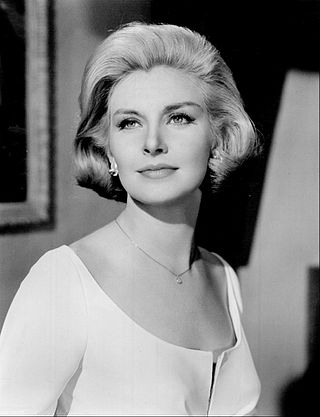
Joanne Gignilliat Trimmier Woodward is a retired American actress. A star since the Golden Age of Hollywood, Woodward made her career breakthrough in the 1950s and earned esteem and respect playing complex women with a characteristic nuance and depth of character. She is one of the first film stars to have an equal presence in television. Her accolades include an Academy Award, three Primetime Emmy Awards, a British Academy Film Award, three Golden Globe Awards, and a Screen Actors Guild Award. She is one of the last surviving stars from the Golden Age of Hollywood cinema and the oldest living Best Actress Oscar-winner.
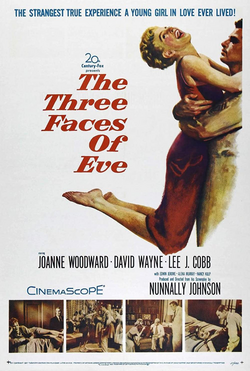
The Three Faces of Eve is a 1957 American film noir mystery drama film presented in CinemaScope, based on the book of the same name about the life of Chris Costner Sizemore, which was written by psychiatrists Corbett H. Thigpen and Hervey M. Cleckley, who also helped write the screenplay. Sizemore, also known as Eve White, was a woman they suggested might have dissociative identity disorder. Sizemore's identity was concealed in interviews about this film and was not revealed to the public until 1977. The film was directed by Nunnally Johnson.
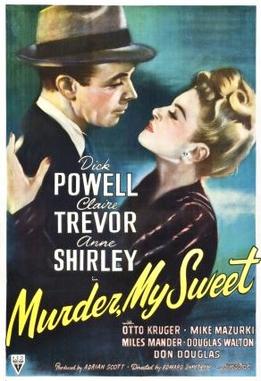
Murder, My Sweet is a 1944 American film noir, directed by Edward Dmytryk and starring Dick Powell, Claire Trevor and Anne Shirley. The film is based on Raymond Chandler's 1940 novel Farewell, My Lovely. It was the first film to feature Chandler's primary character, the hard-boiled private detective Philip Marlowe.

Janet Waldo was an American radio and voice actress. In animation, she voiced Judy Jetson in various Hanna-Barbera media, Nancy in Shazzan, Penelope Pitstop, Princess from Battle of the Planets, and Josie in Josie and the Pussycats. On radio, she was the title character in Meet Corliss Archer.
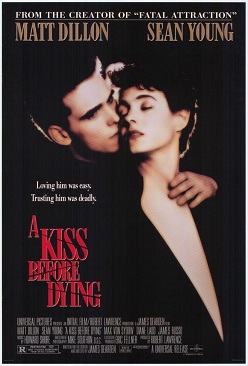
A Kiss Before Dying is a 1991 American romantic thriller film directed by James Dearden, and based on Ira Levin's 1953 novel of the same name, which won the 1954 Edgar Award for Best First Novel. The drama features Matt Dillon, Sean Young, Max von Sydow, and Diane Ladd. The story had been previously adapted under the same name in 1956.
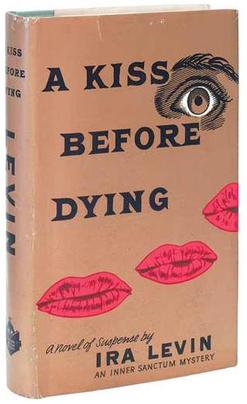
A Kiss Before Dying is a 1953 novel written by Ira Levin. It won the 1954 Edgar Award, for Best First Novel.

Double Wedding is a 1937 American screwball romantic comedy film starring William Powell and Myrna Loy, and featuring Florence Rice, John Beal, Jessie Ralph, and Edgar Kennedy. This was the seventh pairing of Powell and Loy, with another seven to go. It was directed by Richard Thorpe from a screenplay by Jo Swerling based on the unpublished play Nagy szerelem by Ferenc Molnár.
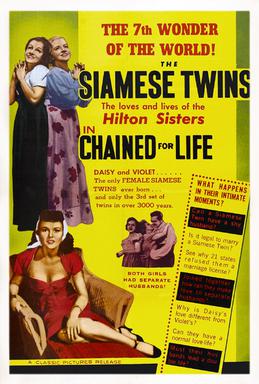
Chained for Life is a 1952 exploitation film featuring the famous conjoined ("Siamese") Hilton Twins, Daisy and Violet. It features several vaudeville acts, including juggler Whitey Roberts, a man doing bicycle stunts, and a man, Tony Lovello, who plays the William Tell Overture and "Hungarian Dance No. 5" at breakneck speed on an accordion.

Night World is a 1932 American pre-Code drama film featuring Lew Ayres, Mae Clarke, and Boris Karloff. The supporting cast includes George Raft and Hedda Hopper.
A Kiss Before Dying may refer to:

Virginia Leith was an American film and television actress.

The Effect of Gamma Rays on Man-in-the-Moon Marigolds is a 1972 American drama film produced and directed by Paul Newman. The screenplay by Alvin Sargent is based on the Pulitzer Prize-winning 1964 play of the same title by Paul Zindel. Newman cast his wife, Joanne Woodward, and one of their daughters, Nell Potts, in two of the lead roles. Roberta Wallach, daughter of Eli Wallach, played the third lead.
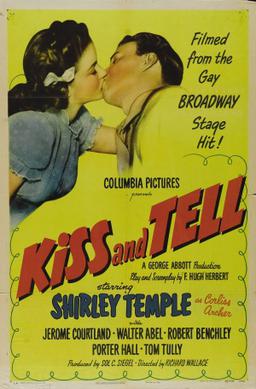
Kiss and Tell is a 1945 American comedy film starring then 17-year-old Shirley Temple as Corliss Archer. In the film, two teenage girls cause their respective parents much concern when they start to become interested in boys. The parents' bickering about which girl is the worse influence causes more problems than it solves.

So This Is Love is a 1953 American musical drama film directed by Gordon Douglas, based on the life of singer Grace Moore. The film stars Kathryn Grayson as Moore, and Merv Griffin. The story chronicles Moore's rise to stardom from 1918 to February 7, 1928 when she made her debut at the Metropolitan Opera.
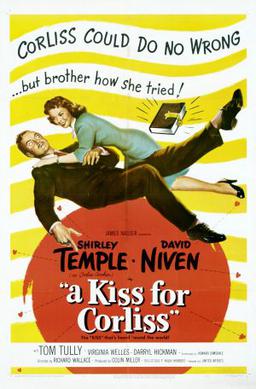
A Kiss for Corliss is a 1949 American comedy film directed by Richard Wallace, written by Howard Dimsdale, and starring David Niven and Shirley Temple. The film, which was the last for both Wallace and Temple, was released on November 25, 1949, by United Artists. It is a sequel to the 1945 film Kiss and Tell, also directed by Wallace and starring Temple.

Kiss and Tell is a 1943 Broadway play by F. Hugh Herbert.
Flaminia Jandolo was an Italian actress and voice actress.

















